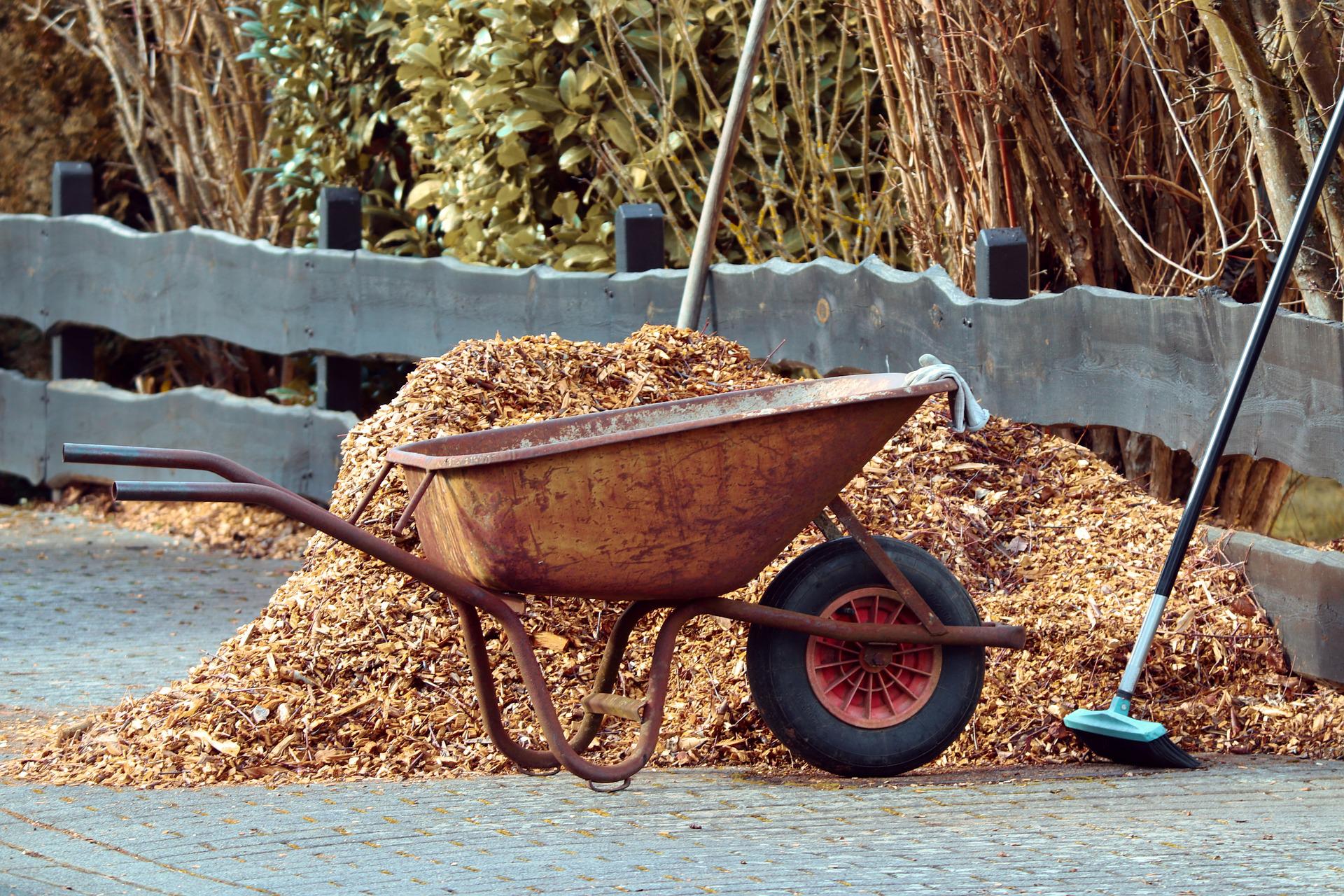
What kind of mulch should I use? How do I apply it?
There are many options - which is best for you?
What is mulch?
Lots to choose from and a few to avoid
Mulch is any organic (natural) or inorganic (plastic) material that is placed on top of soil. Mulch has three main benefits: retaining soil moisture, suppressing weed growth, and protecting against temperature extremes. There is no better hedge against the erratic weather resulting from climate change. Organic mulches improve soil organic matter, while plastic mulches are useful for warming soil.
Mulch can be used in any type of garden: vegetable beds, raised beds, shrub and perennial borders, under trees and in containers. Whichever mulch you choose, ideally it should be low-cost and easy to source.
Of the many mulches used by gardeners, many are beneficial while others, like landscape cloth, cardboard, gravel, or rubber mulch, are detrimental to soil health. The “gold standard” mulch is a shredded wood of some kind such as purchased mulches like cedar mulch or post peelings, or arborist wood chips which can often be obtained for free or at low cost. Research points to arborist wood chips as the ideal mulch and they may be available from a local arborist, forest management company, sawmill, utility company (pruning under power lines) or municipality for free or low cost. Arborist wood chips contain a mix of different species of plant materials including bark, leaves, cones and branches, with some pieces woody and some green. They are ideal mulches in perennial spaces. Bagged mulches made entirely of bark chunks are not recommended.
Other organic mulches include shredded leaves, herbicide-free grass clippings, peat moss, evergreen needles and cones, and well-rotted straw. These all have benefits and drawbacks. Compost and well-rotted manure can be used as a mulch but have drawbacks when used this way because they are prone to weed seed germination. If soil needs compost, it is better to apply compost first and then place mulch on top of the compost.
Mulch is the key to low maintenance, pesticide-free gardening
Mulch is, by far, the most valuable tool in a low maintenance, pesticide-free yard. If you manage your yard like an ecosystem, you can prevent many issues. Ample use of appropriate mulch will profoundly benefit your soil, which has obvious benefits to plant health. Less obvious, the use of appropriate mulches will provide habitat for a diversity of life. Most of this life is tiny or hidden, like microbes, worms and insects, but it is critical. We may not be comfortable with bugs, but most that live in a healthy yard are not pests. The more overall diversity in your yard the less space there is for the "bad" bugs to invade and the more birds and beneficial insects you will have. As such, we highly recommend avoiding pesticides, which may work short term but create long term issues since they tend to damage the "irrelevant" and beneficial insects more than the pests. In addition to thoughtful garden design, we highly recommend using a variety of mulches in different functional areas of your yard to create a wide variety of habitat. We've outlined your various options below.
How to apply mulch
Once you apply mulch, it pays off in minimal weeding, healthier soil, better moisture retention, and happier plants
- Remove all weeds, especially perennial weeds, and their roots.
- Water the soil deeply before applying mulch so that the mulch has moisture to trap in the soil.
- If desired, scatter 1/2 inch (1 cm) layer of compost or composted manure over the soil. No need to dig it in.
- Place mulch to a depth of 4" - 6" (10 - 15 cm), taking care not to mound it against the base or crowns of existing plants and the trunks of trees. Make a little well around the base of plants.
- No landscape cloth or cardboard underneath.
- After placing the mulch, water the mulch again unless rainfall is expected. The extra water ensures the mulch is not dry and encourages microbial action to begin.
Keep mulch in place year round. Check the depth of your mulch every year and top up as needed to maintain the correct depth.
Don't forget ground-nesting bees!
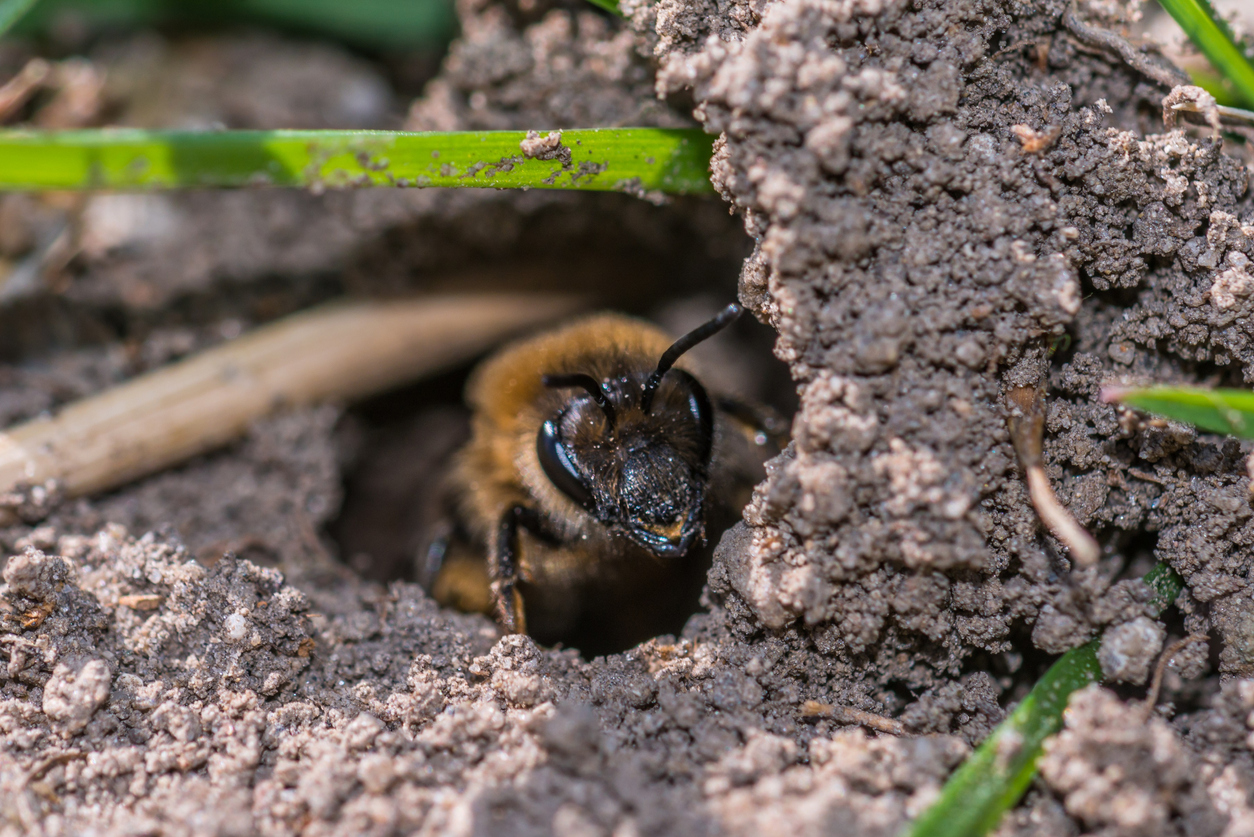
Native ground nesting bees need bare soil to make their nests, so leave a couple of patches of bare soil (about the size of a dinner plate) in an out-of-the-way corner of your garden to help them out. Better yet, reduce your lawn area by replacing underutilized areas with alternative groundcovers, especially clumping grasses, to provide natural bee habitat. In return, they'll help your flowers with pollination.
Why shouldn't I use landscape cloth or cardboard underneath mulch?
Not recommended, ever
Barriers like landscape cloth clogs (in spite of manufacturer’s claims) and cardboard takes a long time to break down in our cold prairie climate. Using these barriers cancel out all the benefit of mulch.
Both landscape cloth and cardboard impedes the flow of moisture as well as air in the soil. Roots and beneficial soil micro-organisms need air as much as water. These barriers do not allow the addition of organic matter into the soil (ie from decomposing mulch) which is key to keeping soil and plants healthy.
How to transition a mulched area next to lawn
There are solutions for this tricky zone
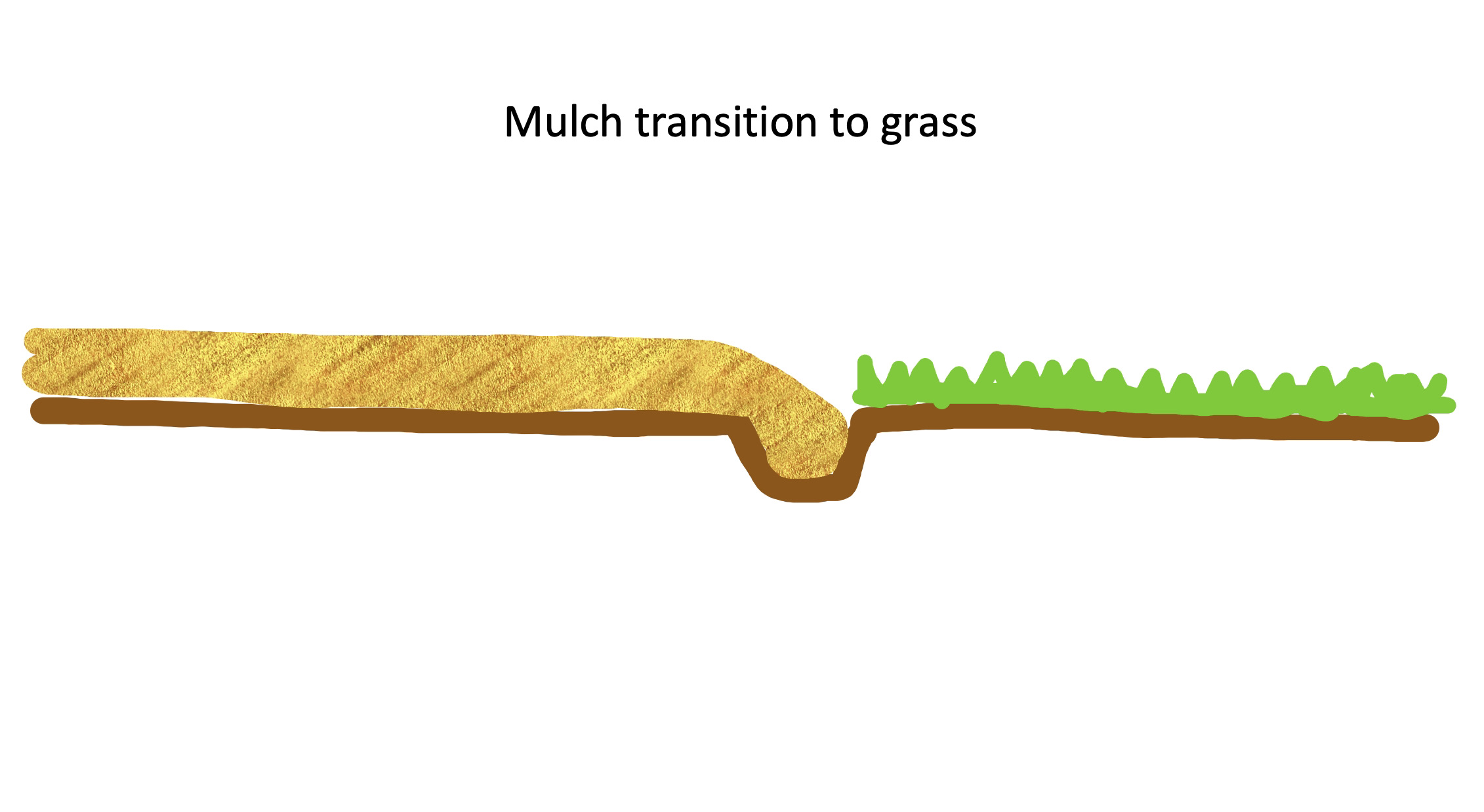
Some perennial plants may grow through mulch and annual weeds may germinate if the mulch is too shallow (less than 4" or 10 cm deep). Mulch tends to be thin along the transition zone between mulched garden beds and the lawn.
One way to ease the transition is to dig a shallow V- or C- shaped trench along the transition zone to separate these areas. In this way, mulch can be maintained at the minimum depth of of 4" (10 cm) and kept separate from the grass zone, making mowing much easier.
Instead of a trench, you can install brick pavers or plastic edging, though grass is more likely to creep into your mulched area with this option. To prevent grass encroachment, make sure there is a solid underground barrier 6-8" below ground level to prevent rhizomes (roots) from growing into the mulch zone.
Dealing with weeds in mulch
Sure, you'll get a few, but the chore of weeding will be dramatically reduced
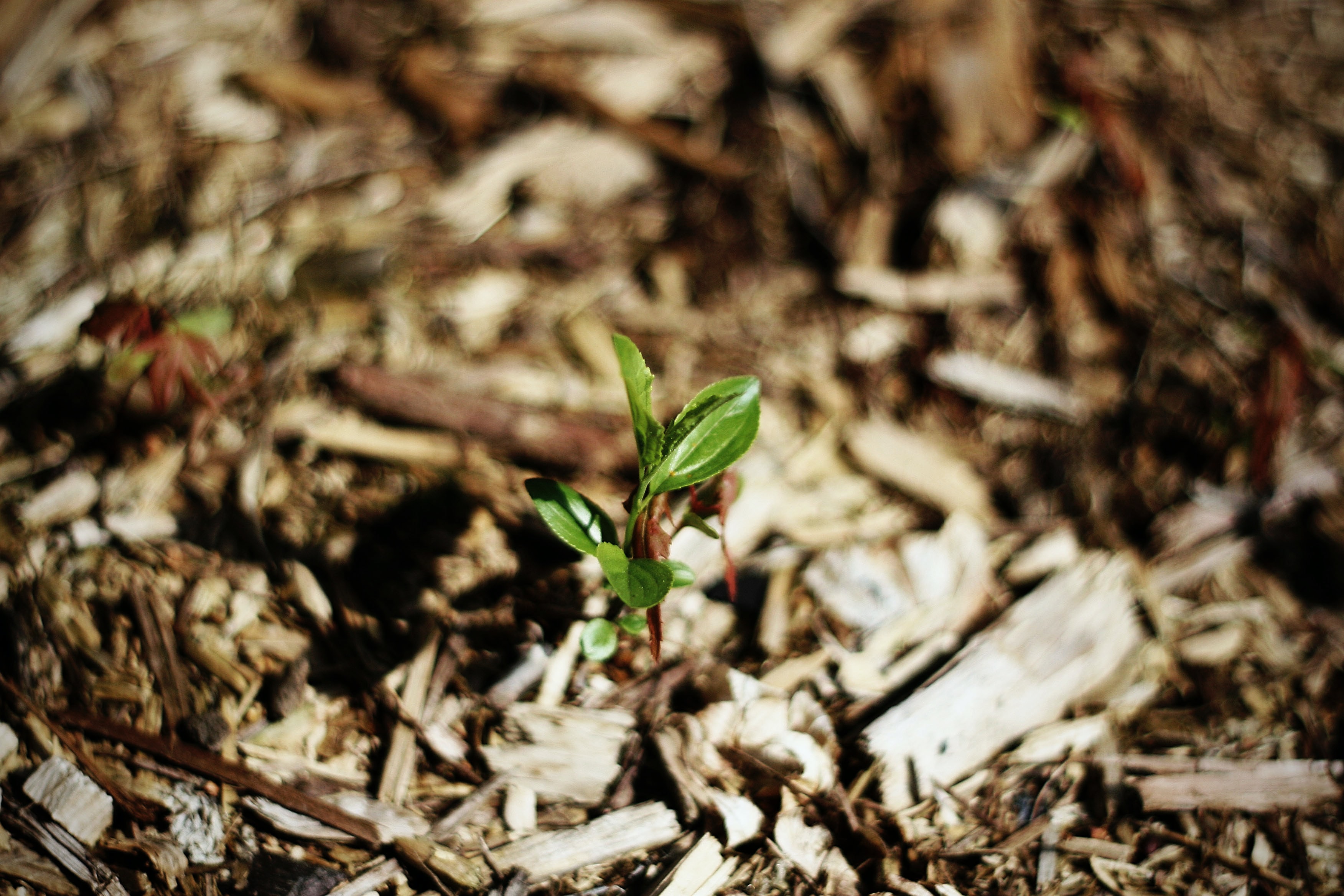
Normal weed prevention and control
All healthy soils contain weed seeds. Mulch is excellent at suppressing weed seed germination provided that it is thick enough - at least 4" (10 cm) deep.
If you find that lots of weeds are poking through the mulch, check the depth. It may be too shallow. If so, top up the mulch to the recommended depth.
Some perennial weeds such as thistle, quack grass and creeping bellflower are persistent enough to grow through mulch. Your best bet is to dig down and get the roots. If not, clip the plants off just below where they emerge through the mulch. By denying them photosynthesis they will lack energy and eventually die back, but this works best if you get at them as soon as they emerge.
Occasionally, seeds such as elms, dandelions. maples and other far-spreading seeds will germinate in thick mulch. Because they germinate in the mulch and not the soil, they are easy to pull. If they're small, simply disturbing them with a hard rake or your foot is enough to dislodge and kill them.
Large patches of pre-existing weeds
If you have significant perennial weed problems and lots of time and mulch, mow the area quite short and apply at least 12" (40 cm) layer of arborist wood chips on top of the area. Leave this in place until the weeds are dead. This will take anywhere between a few months to a couple seasons, depending on the severity of the weed problem. Due to their robust underground root systems, large healthy thistle and creeping bellflower patches will take a longer time to smother than other types of weeds. Since water and air movement is not severely prohibited using this method, your soil health should improve significantly under the mulch without significant damage to existing trees and shrubs. In all situations, keep mulch away from the base of trees and crowns of shrubs.
Woody arborist mulch & post peelings
The "gold standard" of mulch
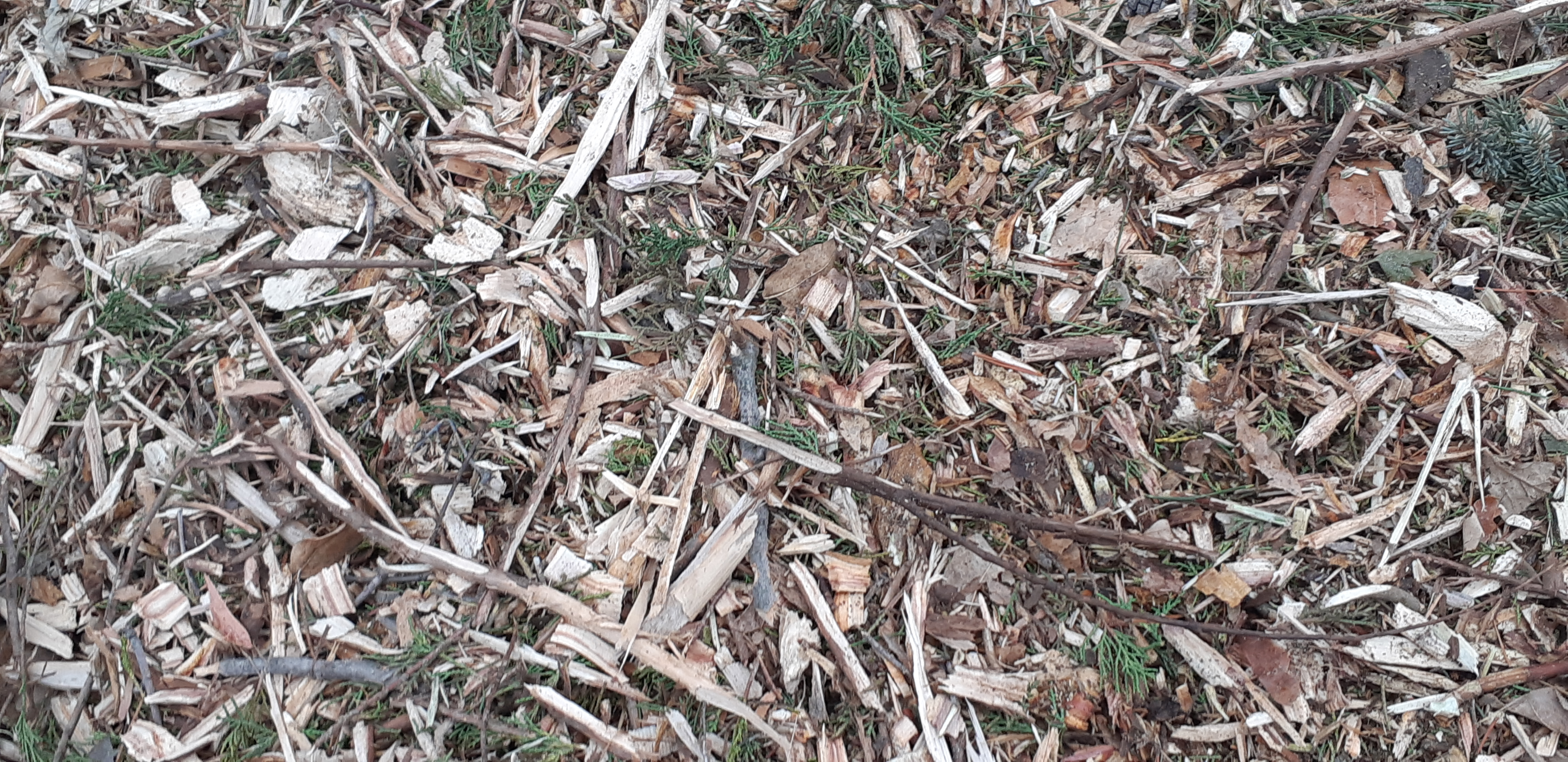
The ideal mulch is the product of arborist prunings that have been put through a mulching machine. Post peelings are made from bark, branch stubs and other woody materials shorn from posts, a by-product of the forestry industry.
Arborist mulch and post peelings are made up of irregularly shaped woody material ranging in size from fine to large, which tends to "lock" together and stay in place. Any kind of wood works as a mulch. Mulch may contain leaves and needles, which break down and help with soil biota. Over time, these mulches turns a silvery colour, which complements trees, shrubs and perennials.
Typical arborist wood mulch is likely to have some samples with disease present. Arborists are legally required to dispose of particularly problematic samples, like elm wood, in the garbage instead of chipping. Research has shown typical disease levels in locally sourced wood chip supplies to be perfectly acceptable without worry of infecting your local trees. This is probably because most diseases present will require airbourne transfer, which isn't likely in this use, and, since arborist wood mulch is sourced from local trees, these diseases are already present in the local area. Keeping trees healthy with the application of appropriate arborist wood mulch will help prevent disease issues.
Bagged and bulk mulch can be purchased from nurseries and hardware stores. It may contain cedar, spruce or other types of wood and are often produced from recycled pallets. Avoid dyed mulches if using in a vegetable garden. Dyed mulches fade over time. Darkly dyed mulches can create unnecessary heat stress for your plants in summer and dormancy issues in winter.
Avoid nugget mulches, which contains large chunks of wood. The chunky texture of these large chunks does not break down readily or provide the same benefits as mulches that are variously textured. Nugget mulches can inhibit ideal moisture transfer, and it may provide habitat for undesirable creatures like rodents and slugs. Rodents and slugs tend to be better controlled in arborist wood chips.
Arborist wood chips summary chart
| Advantages | Disadvantages | Tips | Where to find |
|
Improves soil structure Prevents compaction Habitat for beneficial insects, which can also help control slug populations Looks clean/finished Unlikely to have significant pesticide exposure Is often available free |
May be expensive to transport large quantities Disrupts habitat for ground nesting bees unless a small area is left bare |
Performs best in research OK to have leaves or needles mixed in the mulch Good in any type of garden, but considered best for perennials beds and borders, and under trees and shrubs |
Arborists, forestry, lumber mills, utility companies (pruning trees under power lines)
Free mulch:
|
Post peelings

Straw mulch
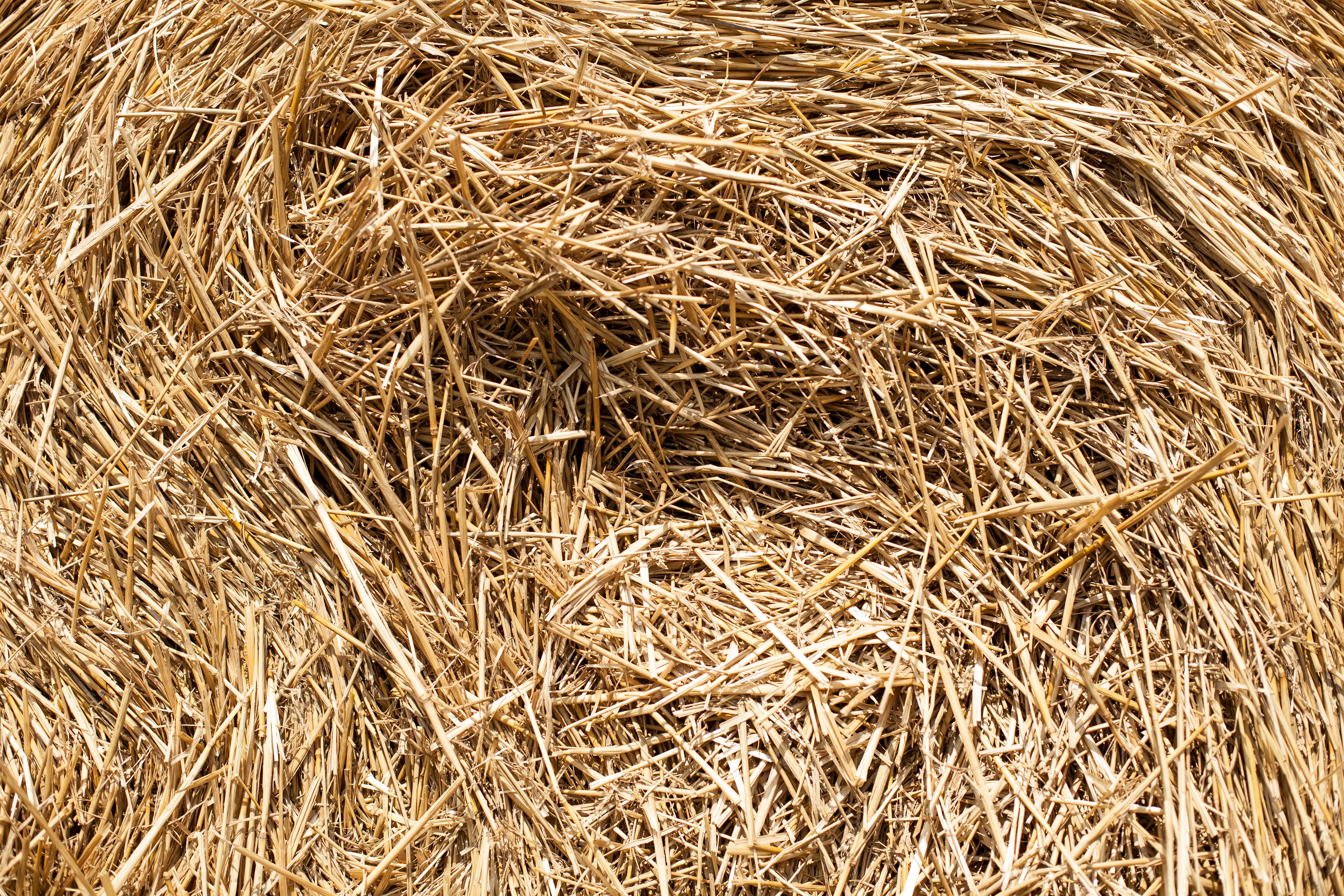
Straw mulch is excellent for vegetable gardens because it is light and easy to handle. Note that straw is different from hay, which should be avoided. Straw is the stalks and chaff that remains after cereal crops such as wheat, barley, flax or alfalfa is harvested. It's best to use old, rotting bales because most of the seeds that remain are no longer viable. There may be the occasional seed that germinates, but these are easy to pull.
Hay is pasture grass harvested for livestock feed. Avoid hay because it contains many seeds which makes it extremely weedy. Hay also breaks down significantly faster than straw and, like most grasses, tends to retain more moisture, which can create slug habitat.
Straw mulch summary chart
| Advantages | Disadvantages | Tips | Where to find |
|
Inexpensive and easy to transport
|
May contain some seeds but these are easy to pull
Farm sourced straw bales can be problematic for asthmatics and allergy sufferers. To reduce this risk, use bagged chopped straw products instead. |
If using farm sourced straw, it's best to use old rotting bales
|
Purchase from farmers Bagged, chopped straw available at hardware and nurseries
|
Leaf mulch
Nature's mulch
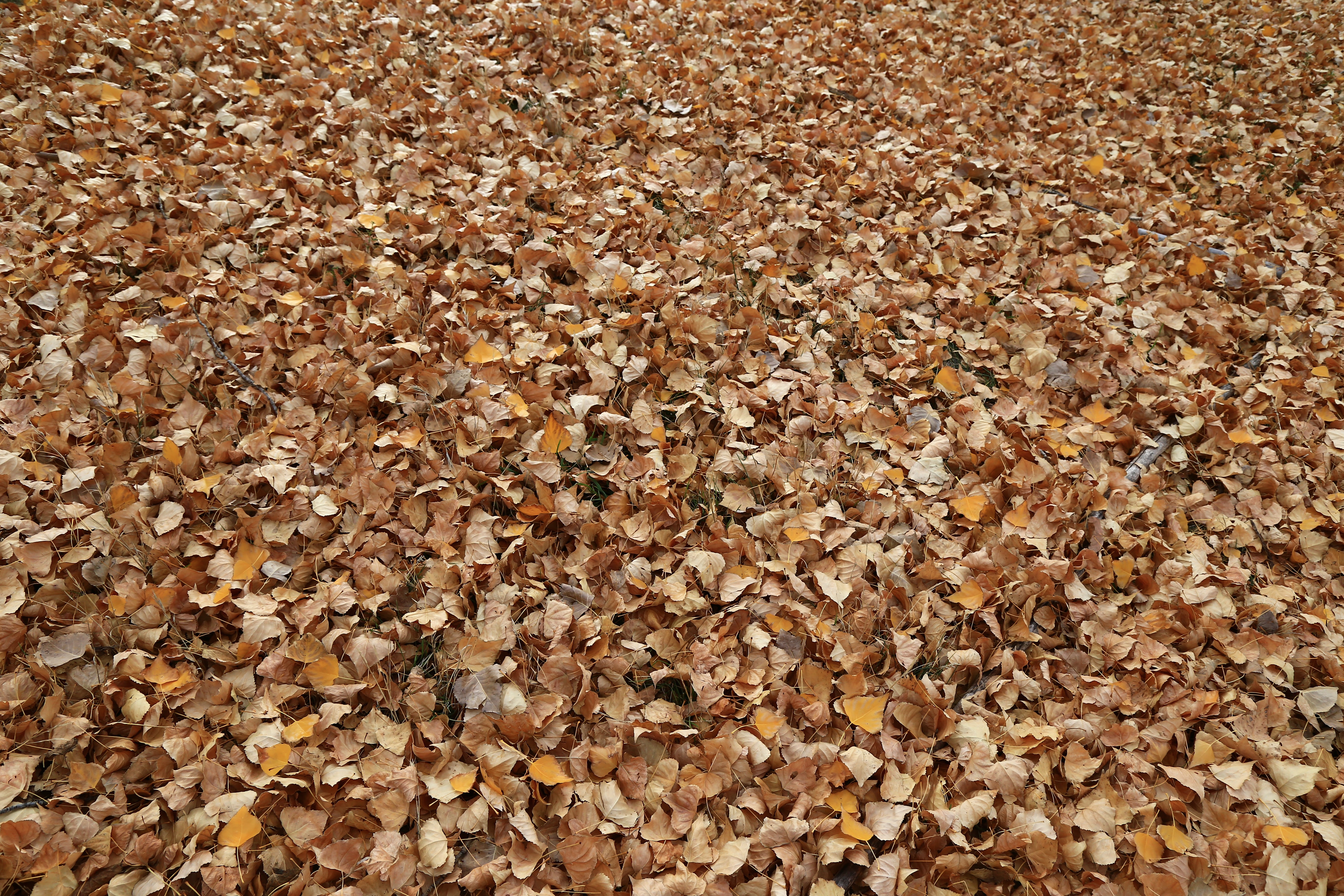
We gardeners have become accustomed to raking up leaves in fall and putting them in our green bins or compost. Leaves however, are a wonderful mulch. Think of our beatiful boreal forests: annual leaf fall slowly decomposes and provides nutrients and organic matter to the trees.
An easy way to handle lots of leaves is to make a shallow pile and run them over with the lawnmower to chop them up. If you're getting leaves from your neighbour, know that many people tend to bag incidental garbage with their leaves and this will need to be removed before shredding the leaves. Chopped leaves can be mixed with dry (pesticide-free) grass clipping and applied to any type of garden but are especially useful in vegetable gardens.
Leaf mulch summary chart
| Advantages | Disadvantages | Tips | Where to find |
|
Inexpensive and easy to transport Easy to handle in a vegetable garden As leaves break down, they provide unique soil benefits Unlikely to have pesticide exposure Ideal ladybug habitat |
May contain some seeds but these are easy to pull Some find it looks messy As leaves decay, they can form a matt that is difficult for air and water to penetrate. As such, keep these layers thinner, topping up more frequently, and "fluff" as necessary. Can create slug habitat |
Keep extra bags of leaves for use in your compost as a handy "brown" or dry material. May need to be topped up yearly It takes a tremendous amount of leaves to mulch a small area |
Local social media groups
|
Evergreen needles and cones
Ideal under trees
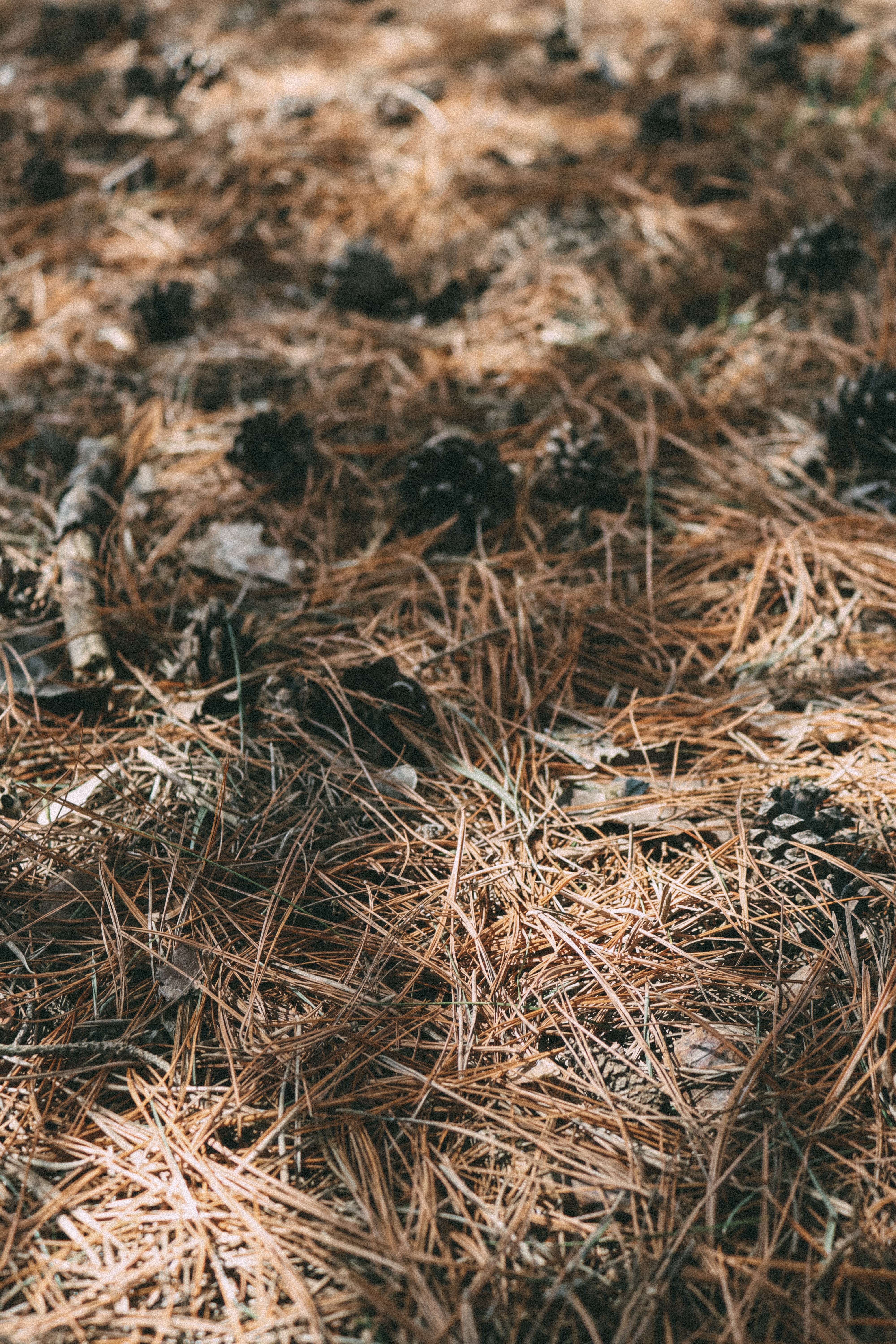
It's normal for evergreen trees and shrubs to drop old needles and cones periodically.
Needles and cones are sharp and hard to handle, making them undesirable for vegetable gardens. Instead of removing them, rake them up to top up the mulch under the trees from which they fell. Needles and cones are free and add an attractive layer of texture under the tree. They will not impact the pH of the soil and can provide excellent habitat for other types of beneficial insects.
Grass clippings
Herbicide-free of course
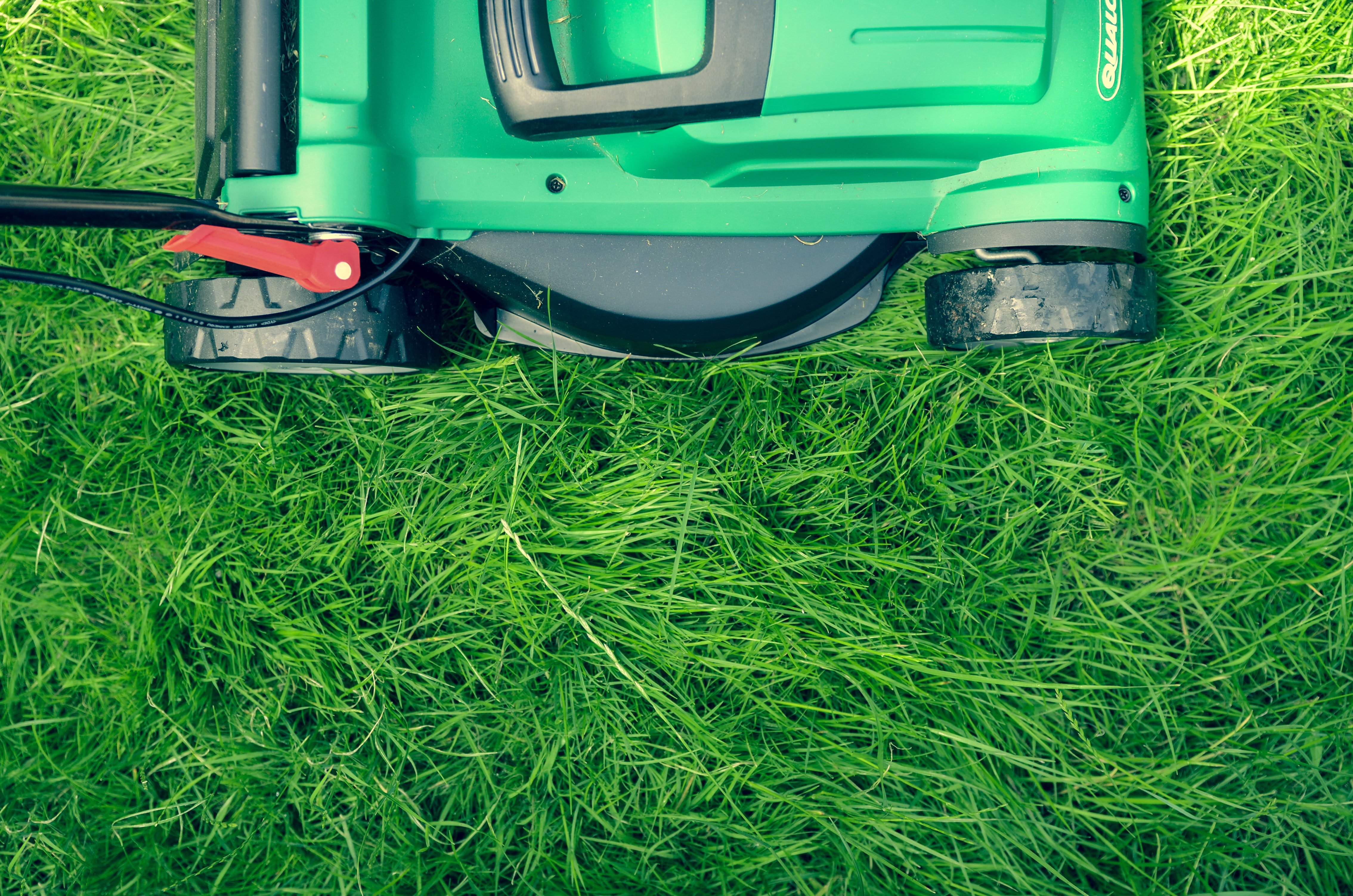
If you have a lawn, grass clippings can be used as a mulch, and it's free too. Only use grass clippings if you have not used a herbicide on the lawn to kill weeds - herbicides can persist for long periods and you don't want that in your mulch.
Fresh grass clippings tend to matt and become slimy which impedes moisture and creates slug habitat. Instead of fresh, leave the clippings on the grass for a few days and allow them to dry. Once dry, rake them up and apply as a mulch. You can also mix them with dry leaves before applying as a mulch.
Grass clippings break down quickly so it needs frequent topping up.
Rubber tire mulch
Not recommended, ever
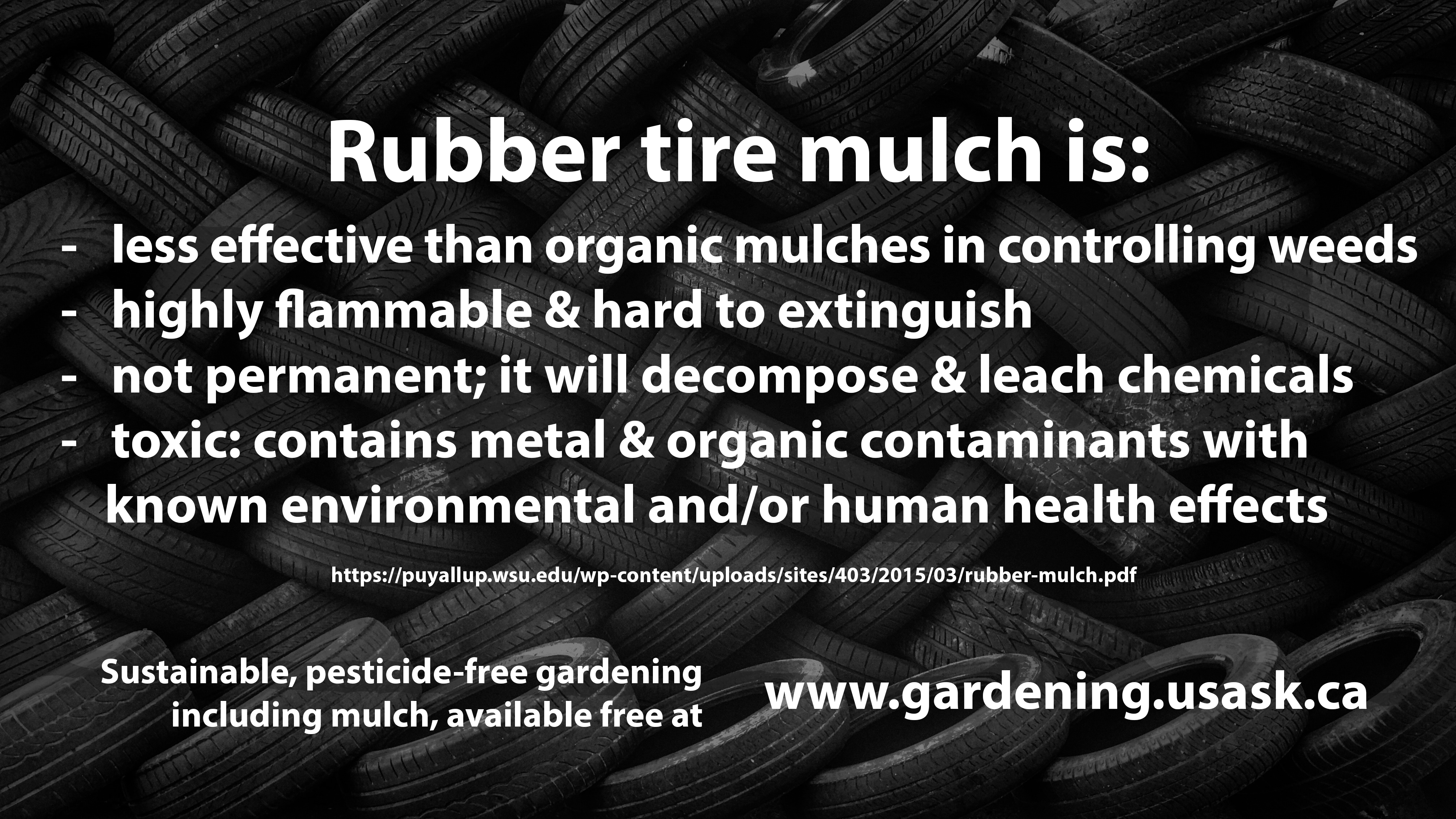
Sawdust
Not recommended
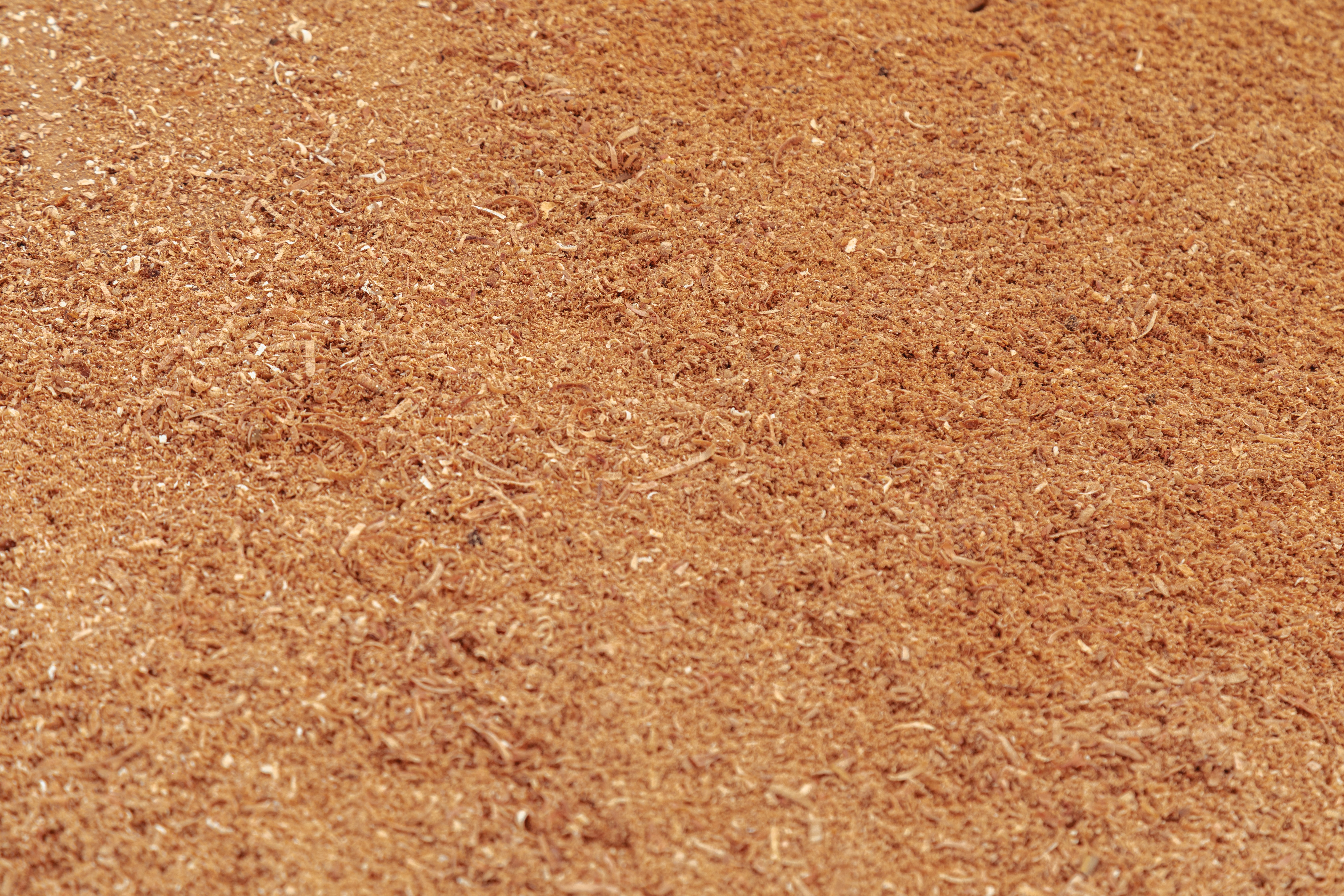
It seems a shame to waste this free product but the fine texture of sawdust is not a good mulch. Sawdust matts and compacts easily which impedes moisture and air movement. Sawdust may contain contaminants from glues or varnish, depending on the wood source. It is easily mixed into the soil which robs it of nitrogen. It may also acidify certain northern soils as it decomposes.
Gravel mulch
Not recommended except for alpine and scree gardens
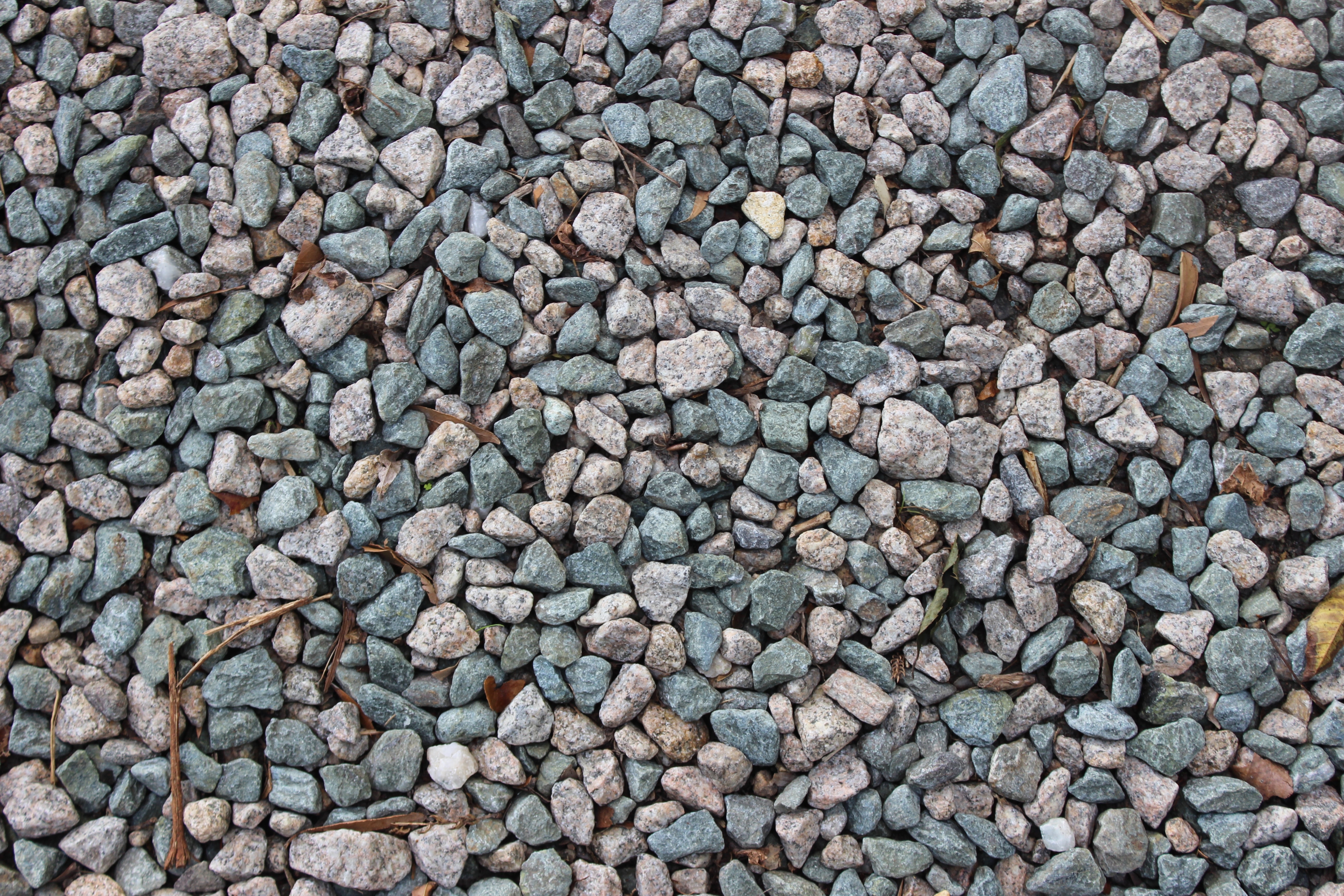
Some like the look of gravel mulch, but gravel heats up hot weather and this can damage roots as well as soil microbes which can cause all kinds of problems for plants. Gravel mulch on top of soil tends to mix at the surface to create long term issues, though this can be prevented with landscape fabric. However, this is not a good long term solution. If there is landscape fabric under the rocks, this is also not recommended as it will clog (in spite of manufacturer’s claims) and this impedes moisture as well as air. Roots need air as much as water. Not only will this actively inhibit soil and plant health, once weeds germinate on top (and they will, eventually), the roots will intertwine with the landscape fabric to create long term issues.
Gravel mulches, with or without landscape fabric, do not provide the same benefits as mulches that break down over time. There is no way to maintain the health of your soil by way of maintaining organic matter, which other mulches such as arborist mulch, leaves, straw and other once living materials provide. Importantly, they also do not provide habitat for beneficial insects and may provide habitat for undesirables.
Weeds can germinate in gravel mulch and these are difficult to remove without using herbicides or creating significant disturbance.
Gravel mulch does work well for roadways and pathways and can be used to meet the special needs of alpine plants in scree gardens.
Frequently asked questions about mulch
Q: I found mushrooms growing on my mulch. Is this harmful to my plants?
A: Mushrooms and molds are the fruiting bodies of a much larger organism which decompose and recycle organic matter, making nutrients more available to the plants. They tend to show up on woody or straw mulches or at the site of removed trees, but also appear in lawns and gardens, or even a peat-based potting mix. Mushrooms and molds won’t harm your plants so if you don’t like the look of it, simply remove it. Never eat any mushroom found in a lawn, garden or in the wild. Many mushrooms contain toxins that can cause serious illness or even death. Many edible and toxic mushrooms look similar, and it takes an expert to know the difference.
Q: Is it okay to layer two different types of mulches?
A: Ideally, it's better to stick with one type of mulch instead of layering one mulch on top of another. An example of this would be using woody arborist mulch which is coarsely textured on top of flax straw which is finely textured. The reason for this is that water does not move well between two different textures of mulch.
It is okay however, to use two types of mulches in one garden side-by-side. For example, you can use a woody arborist mulch for pathways and a straw mulch on growing beds in a vegetable garden.

